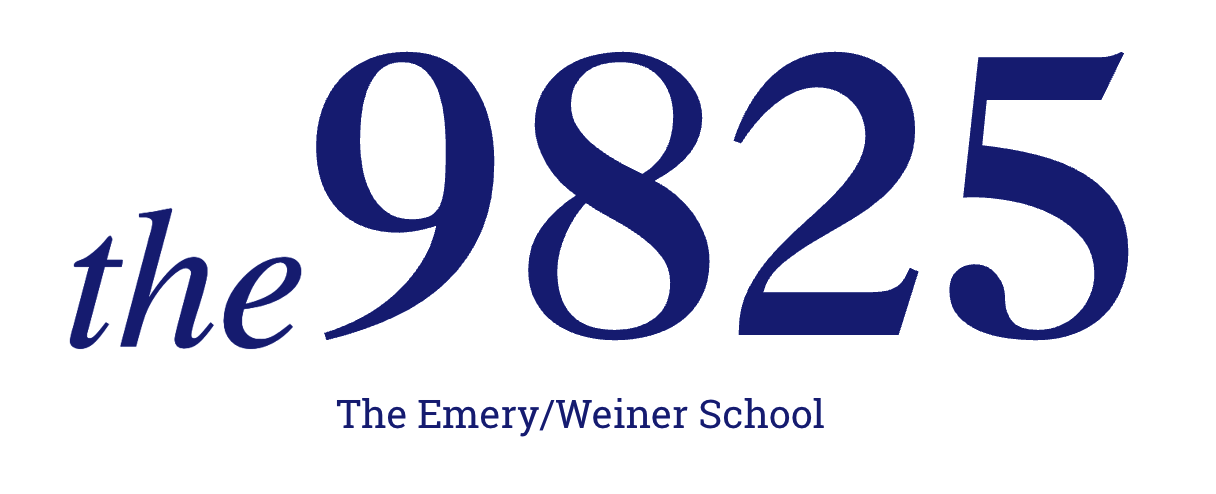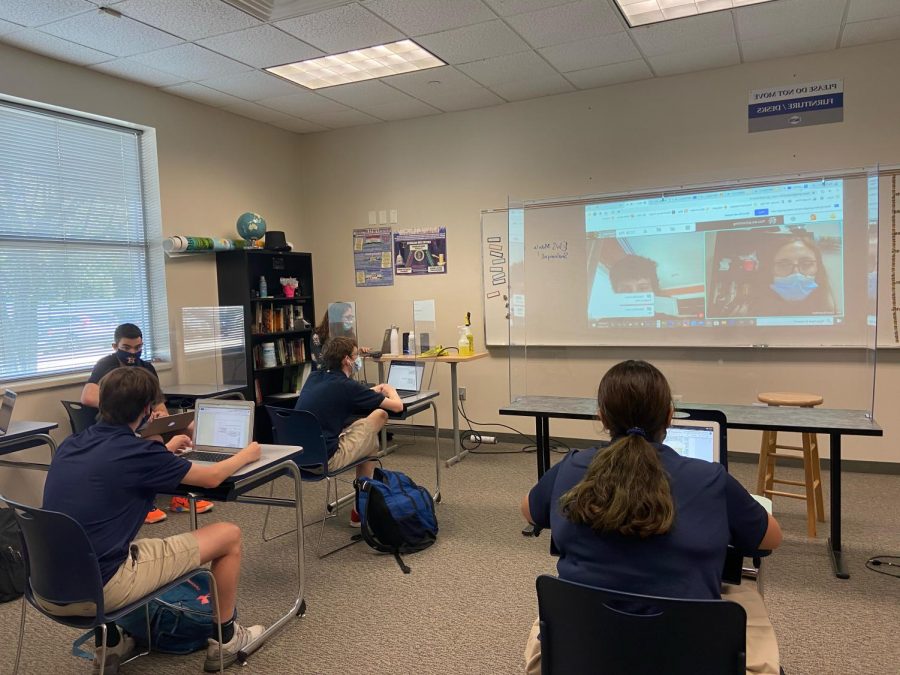Students Return to Campus
Ms. Rosenthal’s upper school history class is working hard to include virtual students by projecting them onto the white board.
October 12, 2020
It has been almost one month since some students returned to campus for Emery’s new hybrid learning model. While many community members are thrilled, others have reservations about the inclusivity and safety of the current model. Hearing from multiple perspectives, including an on-campus student, remote student, and a teacher, is essential to evaluate the community’s opinion on the recent return to campus.
Junior Phoebe Cosgrove took her classes at home the first weeks of school to see the effects of the transition before deciding if she would return to campus. She “expected the return to campus to go pretty smoothly, because Emery is a small community and we all know the importance of keeping everyone safe.” Cosgrove was apprehensive about how EWS would integrate remote students into in-person classes. “The first week went a lot better than I thought,” she conceded, “and I didn’t have any [technical difficulties].”
On-campus sophomore Shira Alatin says she is excited to be back on campus because she feels she has the “ability to learn better and take advantage of the learning experience Emery has to offer” by being in the classroom. Alatin recognizes the challenges of on-campus learning while social distancing as “collaborative work still remains on Google Meet calls, and you can’t move around the classroom during group work.” As an on-campus student, Alatin is aware of an exclusivity that remote students may feel when “online students can’t interact with the rest of the class.When some teachers put the online students on the big screen and everyone can see and hear each other,” she explains, “the remote students are able to feel like they are a part of the class.”
The return of students to campus has been challenging for some teachers as they strive to continue the Emery Difference in their classrooms. Upper School history teacher Trip Galleher believes a benefit of on-campus learning is that it “gives structure to students they don’t know they need. I think a lot students wish they could be at home on their own schedule, but I don’t know how ready students are for that amount of freedom.” Galleher also believes “the on-campus learning model is as inclusive as we can make it,” but it does have shortcomings. “Many teachers are trying to come up with technological solutions to doing group work and outdoor activities, but when the class is a mix of on campus and remote students, these things become challenging.”
In Galleher’s opinion, the loss of community is the biggest disadvantage of the current learning model. “The Emery difference is rooted in the community stuff we normally do, and during this time we don’t have that. The feeling of being a part of the Emery culture bleeds into the classroom and affects students’ attention spans,” Galleher remarks. Without culture and community, “we’re missing out on the thing that makes us, us,” he explains.
While opinions on our on-campus learning model naturally vary, our shared values of inclusivity and flexibility keep our community going during this challenging time. Our community will adjust together as time goes on, as we hope that Emery and the world will be able to return to “normal” sometime soon.

